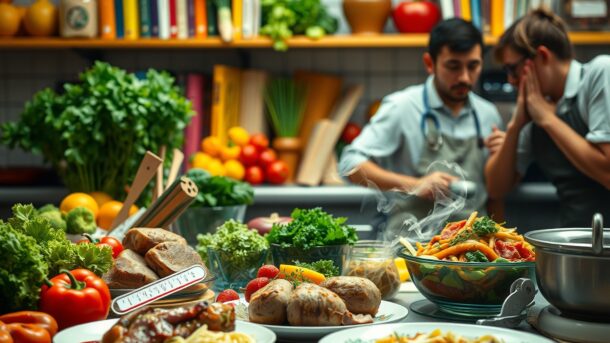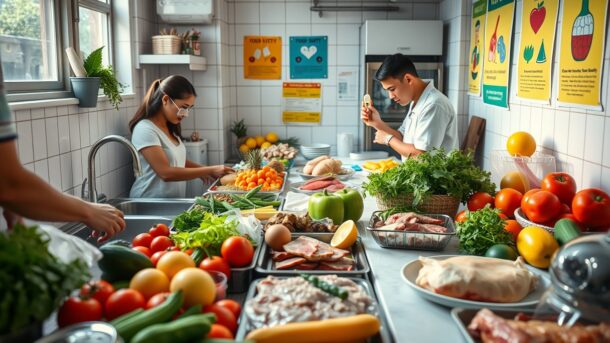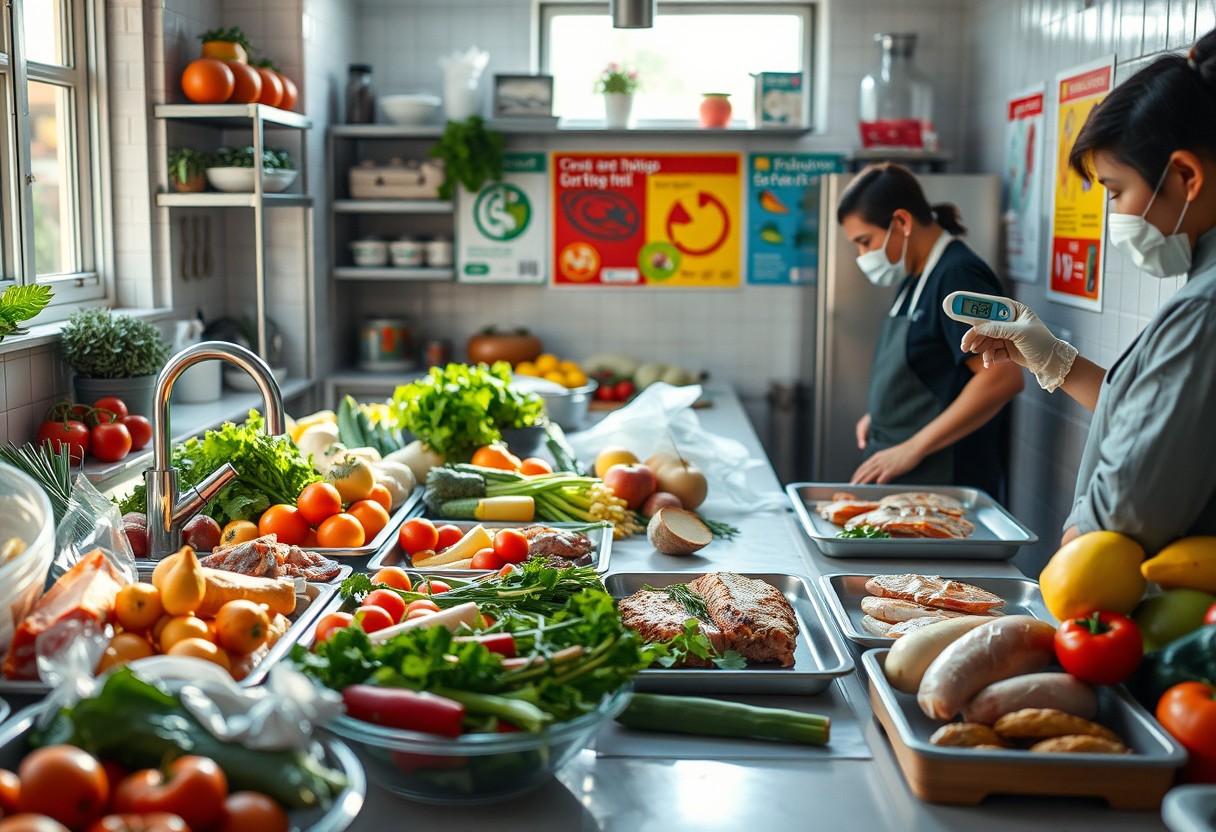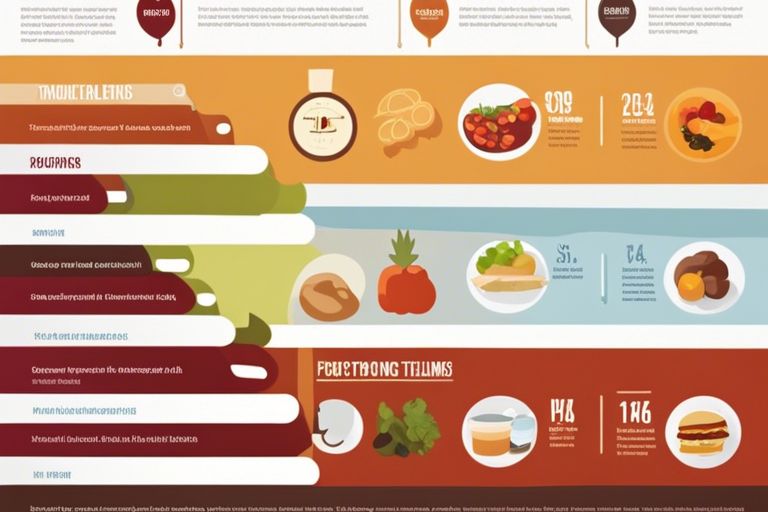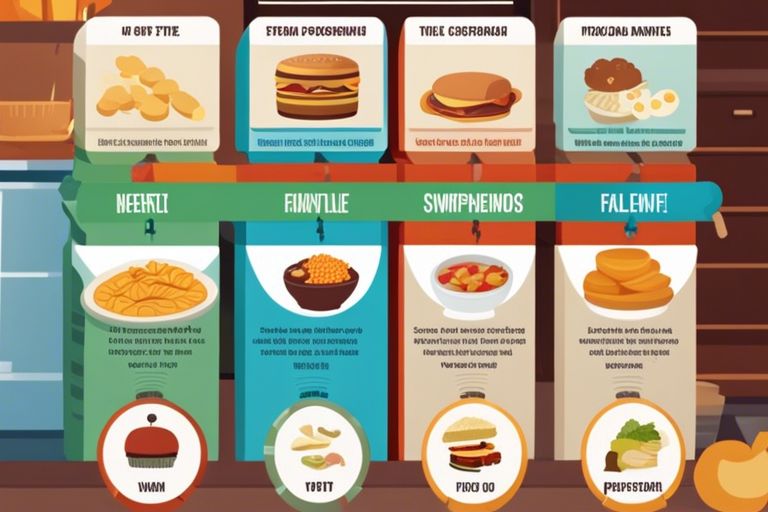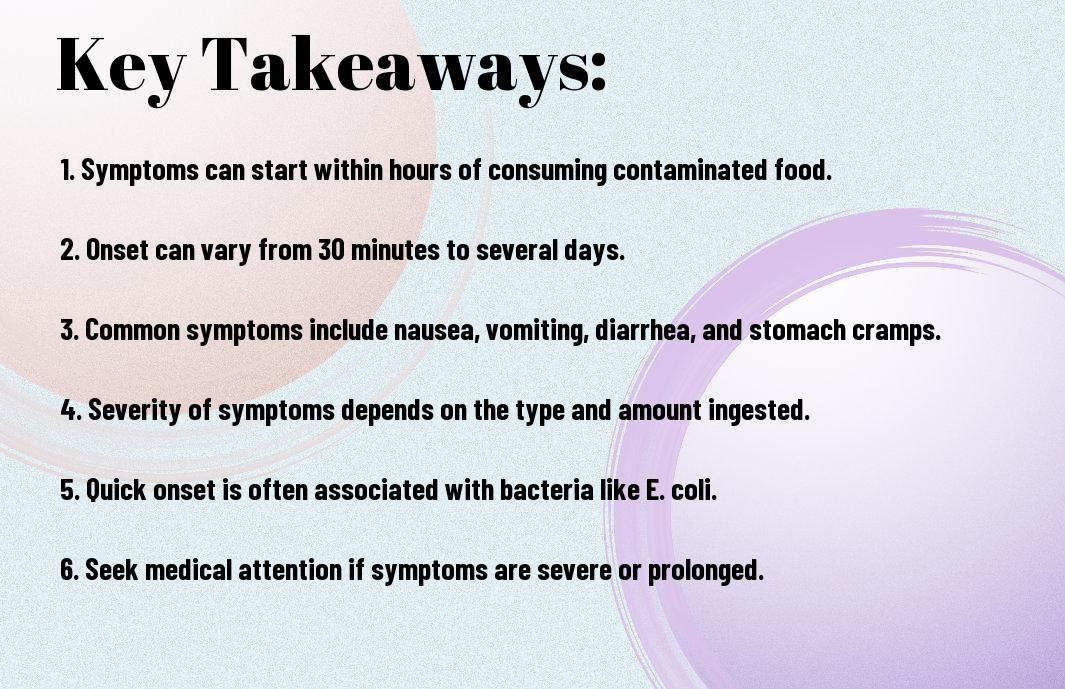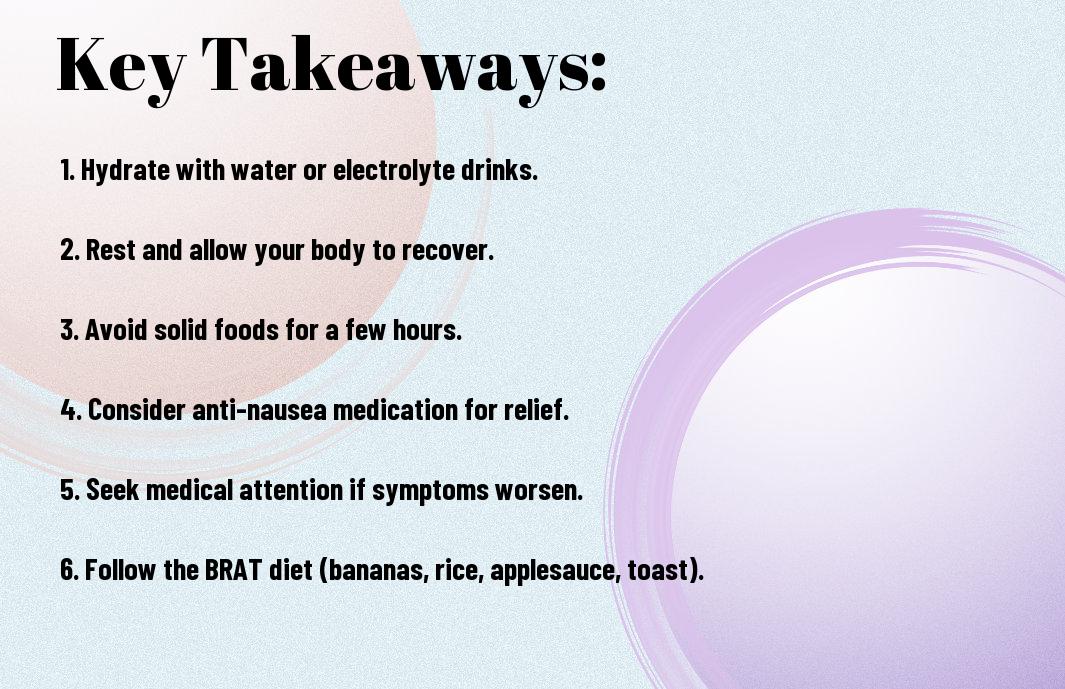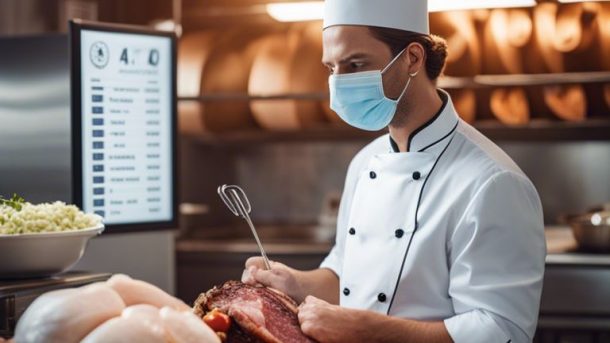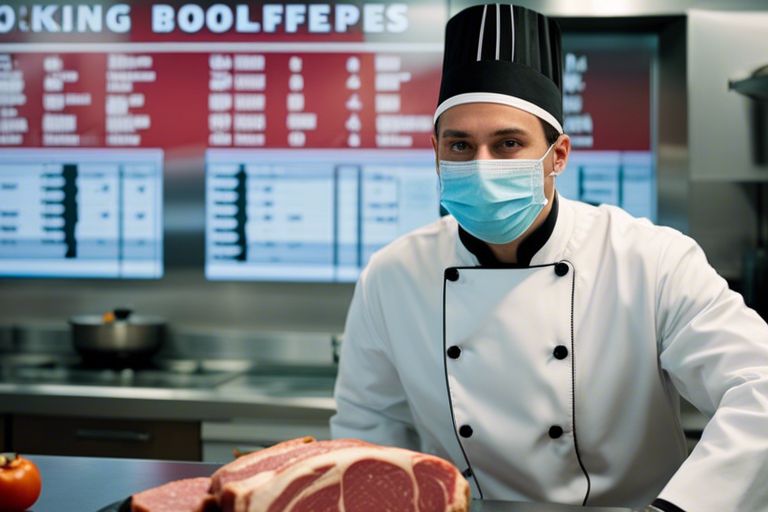Most people underestimate the signs of food poisoning, but recognizing them early can make a significant difference in your recovery. Symptoms like nausea, vomiting, diarrhea, and abdominal cramps are commonly associated with foodborne illnesses, and being aware of these hints can help you take prompt action. If you’ve experienced any of these symptoms after eating, it’s necessary to know more about your condition. For detailed information on Food Poisoning: Symptoms, Causes, and Treatment, stay informed and prioritize your health.
Key Takeaways:
- Nausea and Vomiting: Experiencing symptoms like nausea and vomiting can indicate food poisoning.
- Diarrhea: Frequent and loose stools are a common sign and may be accompanied by abdominal cramping.
- Fever: Developing a fever can be a body’s response to infection from contaminated food.
- Headaches and Muscle Pain: These symptoms may accompany food poisoning, indicating a body reaction to pathogens.
- Dehydration: Excessive vomiting and diarrhea can lead to dehydration, so monitor for signs like thirst, dry mouth, and reduced urination.
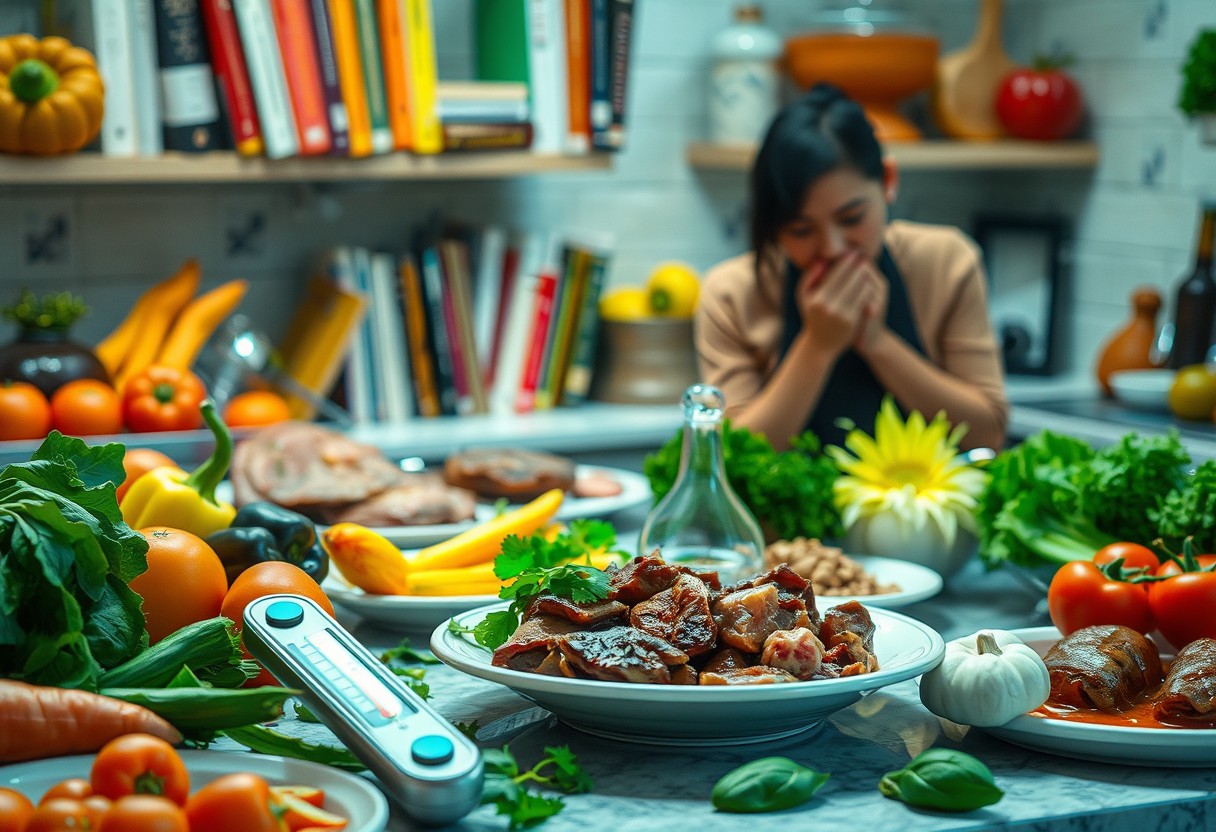
Understanding Food Poisoning
While food poisoning can be a serious health issue, understanding its core elements can help you prevent and manage it effectively. To learn more about this condition, visit Food poisoning resources.
Definition of Food Poisoning
Understanding food poisoning begins with its definition: it refers to an illness caused by consuming contaminated food or beverages. These contaminants often include bacteria, viruses, or parasites that can lead to various symptoms affecting your gastrointestinal health.
Common Pathogens Associated with Food Poisoning
An important aspect of food poisoning is recognizing the common pathogens responsible for outbreaks. These pathogens typically include bacteria such as Salmonella, E. coli, and Listeria, alongside viruses like Norovirus, which are capable of causing illness through contaminated food products.
Poisoning from these pathogens can occur when you consume food that has been improperly handled, cooked, or stored. For instance, eating undercooked meats or unwashed fruits and vegetables increases your risk. Being aware of these common sources can help you make safer food choices.
Risk Factors for Food Poisoning
Definition of risk factors for food poisoning often involves understanding various personal and environmental circumstances. Some common factors include:
- Your age (very young or elderly individuals are more vulnerable)
- Weakened immune system due to medical conditions or treatments
- Improper food handling practices in your home
- Traveling to regions with different hygiene standards
Assume that being aware of these risk factors may help you reduce your vulnerability to food poisoning.
Factors contributing to your risk of food poisoning can significantly influence your health and well-being. Identifying and addressing these risks involves:
- Ensuring proper cooking temperatures for your food
- Practicing good hygiene during food preparation
- Storing food properly to prevent spoilage
- Regularly checking expiration dates on perishable items
Assume that by taking these precautions, you can greatly reduce your chances of experiencing food poisoning.
Identifying the Hints of Food Poisoning
Some common hints of food poisoning can manifest in various ways, and being aware of these can help you respond promptly. Look out for symptoms such as nausea, vomiting, diarrhea, abdominal cramps, and fever. These signs may develop within hours or even days after consuming contaminated food or beverages.
Common Symptoms to Look Out For
For many individuals, the initial symptoms of food poisoning often include stomach pain, diarrhea, and vomiting. These discomforts can vary in intensity and may be accompanied by other symptoms like fever and chills, indicating that your body is fighting an infection.
Severity and Duration of Symptoms
Symptoms of food poisoning can vary widely in severity and duration depending on the underlying cause. Some people may experience mild symptoms that resolve quickly, while others could endure prolonged and severe illness requiring medical attention.
Plus, the duration of your symptoms can range from a few hours to several days. If your symptoms persist beyond a couple of days or worsen, you should seek medical advice, as more serious conditions may need to be addressed promptly. Monitoring your symptoms is crucial to ensure you’re getting the appropriate care.
Recognizing Symptoms in Different Age Groups
Common signs of food poisoning can present differently in various age groups. For example, children and the elderly may exhibit more severe symptoms or prolonged recovery due to their compromised immune systems. Recognizing these differences ensures appropriate responses based on the individual’s age.
Severity of food poisoning symptoms may escalate in vulnerable populations such as infants, older adults, and those with pre-existing health conditions. Be especially vigilant and proactive if you or someone you care for falls within these categories, as dehydration and other complications can arise more quickly in these groups. Always prioritize seeking medical advice if you’re concerned about symptoms in these age brackets.
Preventative Measures
Keep your kitchen safe by practicing good food handling. This includes washing your hands regularly, using clean utensils, and avoiding cross-contamination between raw and cooked foods. Make it a habit to sanitize surfaces and store food properly to minimize the risk of foodborne illnesses.
Safe Food Handling Practices
An effective way to prevent food poisoning is to adhere to safe food handling practices. Always wash your hands before and after preparing food, use separate cutting boards for raw meats and vegetables, and ensure utensils are clean to avoid spreading harmful bacteria.
Importance of Cooking Temperatures
Safe cooking temperatures are crucial in ensuring that harmful bacteria are killed. Different types of food require specific internal temperatures to be considered safe. Referencing cooking guidelines can significantly reduce the risk of foodborne illnesses.
Safe Cooking Temperatures
| Food Type | Safe Minimum Internal Temperature |
| Poultry | 165°F (75°C) |
| Ground meat | 160°F (71°C) |
| Beef, pork, lamb | 145°F (63°C) |
It’s important to use a food thermometer to ensure that your meals have reached the correct internal temperatures. This practice not only guarantees that harmful bacteria have been eliminated but also helps retain the juiciness and flavor of your food, making your meals safe and delicious.
Proper Food Storage Techniques
Handling food with care extends to proper food storage techniques. To keep your meals safe, ensure foods are stored at appropriate temperatures, and label items with dates to prevent spoilage. Always refrigerate perishable items promptly after purchase or preparation.
Preventative measures also include regular checks on your refrigerator and pantry to discard expired items. Storing food at the right temperature, like keeping your fridge below 40°F (4°C) and your freezer at 0°F (-18°C), will help maintain high food quality and safety. By taking these steps, you will minimize the risk of food poisoning in your household.
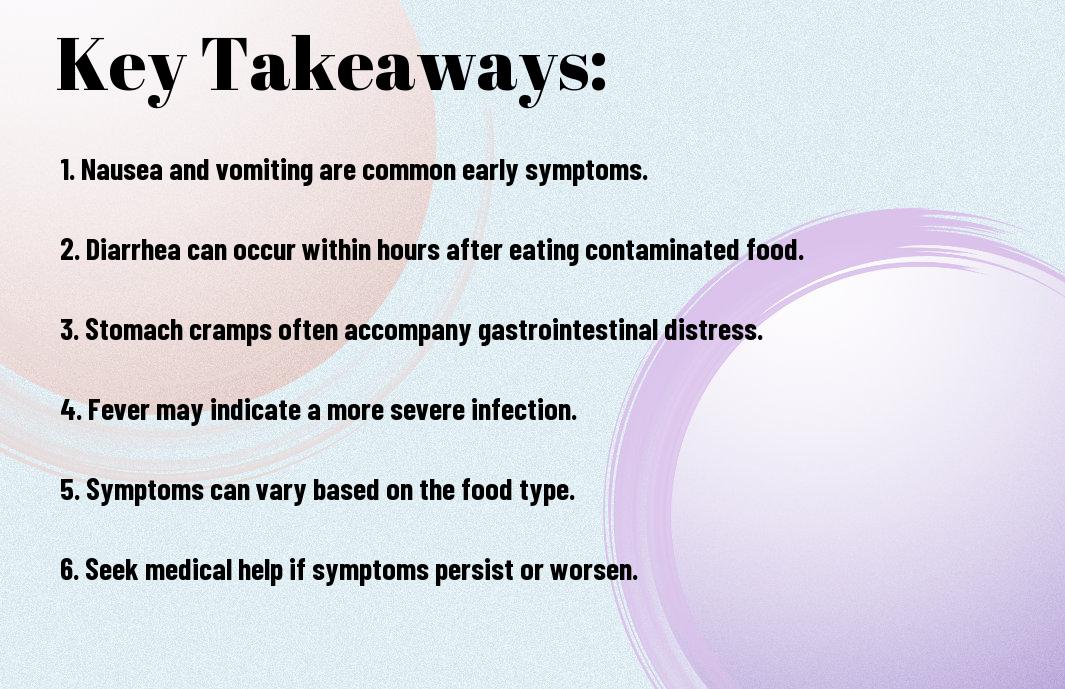
Summing up
Presently, understanding the hints of food poisoning is crucial for your health. You may experience symptoms such as nausea, vomiting, diarrhea, abdominal cramps, and fever shortly after consuming contaminated food. It’s necessary to stay vigilant about what you eat and recognize these signs early to seek appropriate treatment. For more detailed information, you can visit Food Poisoning: Signs & Symptoms, Treatment, Causes. Being informed can help you take proactive steps towards prevention and care.
FAQ
Q: What are the common symptoms of food poisoning?
A: The common symptoms of food poisoning can vary depending on the type of contaminant, but typically include nausea, vomiting, diarrhea, abdominal pain, and cramps. These symptoms may appear within hours of consuming the contaminated food or beverage and can last for several days. In some cases, individuals may also experience fever, chills, muscle aches, and fatigue.
Q: How can I tell if my symptoms are serious enough to seek medical attention?
A: While most cases of food poisoning resolve on their own, certain symptoms indicate the need for immediate medical attention. Seek help if you experience severe dehydration, persistent high fever (over 102°F or 39°C), prolonged vomiting that prevents you from keeping liquids down, or blood in your stool. Vulnerable populations such as young children, elderly individuals, and those with weakened immune systems should also be evaluated by a healthcare provider if they suspect food poisoning.
Q: What are some preventive measures to avoid food poisoning?
A: To prevent food poisoning, practice proper food safety techniques such as washing hands thoroughly before handling food, cooking meats to the appropriate temperatures, avoiding cross-contamination by using separate cutting boards for raw meat and vegetables, and refrigerating perishable foods promptly. Additionally, be cautious with food sourced from street vendors or unfamiliar restaurants, and always check expiration dates on packaged foods.
